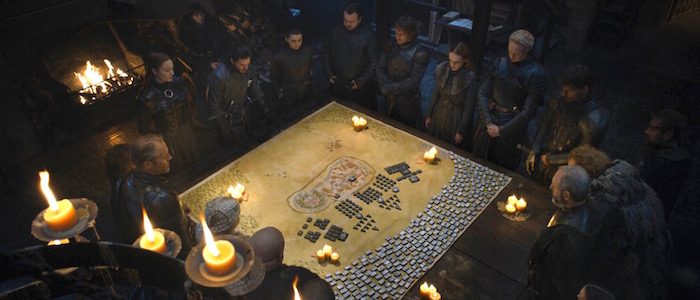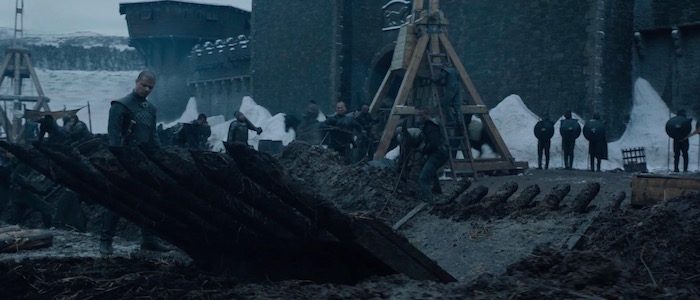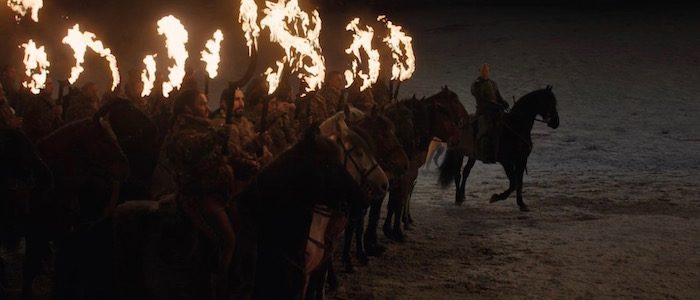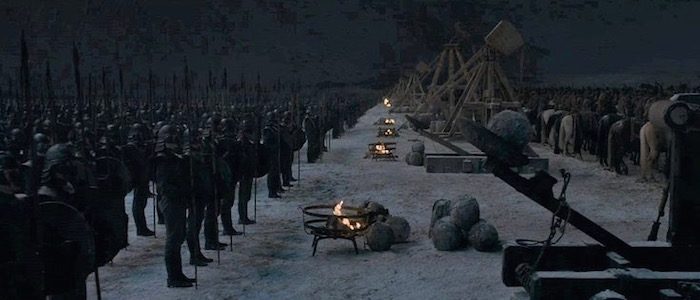The Battle of Winterfell on ‘Game of Thrones’ Was a Tactical Clusterf*ck – And a Military Officer Told Us Why

Whether you thought “The Long Night” was the best episode of Game of Thrones ever, hated it, or just couldn’t see it, one thing was very clear: from a military standpoint, this was one of the most poorly planned battles of all time. The Dothraki charging blindly into the night. The grossly undisciplined commanders. The army of the living suffering losses on an enormous scale. It wasn’t just because the Northerners and their allies were outnumbered. Without Stannis, Tywin, Robert Baratheon, and Robb Stark, the side of the living was run by somewhat novice leaders who have made it through battles because of luck and dragons.
While the dead had the obvious advantage, the living could have done a much better job of buying time and preserving their forces. To find out just where the living went wrong and what they should have done, I spoke with a military officer sporting nearly 15 years of wartime experience. He also happens to be a massive Game of Thrones fan. He broke down the five major missteps, and outlined what the living should have done to kill more wights, minimize the loss of life, and most importantly, not embarrass their ancestors with the worst-organized battle in Westerosi history.

Where is King Leonidas When You Need Him?
A common battle tactic that even a novice like me knows is that location is everything – knowing where to stand your ground can be the difference between victory and defeat. Whether you learned it from watching 300 or from the history books or from the battle of Helm’s Deep in The Lord of the Rings, the idea of being able to force a massive army through a funnel and only fight a small force at a time seems like Battlefield Logic 101. However, this doesn’t seem like a possibility for the poor souls of Winterfell. The Stark castle lacks the natural defenses of other strongholds such as the Vale, and the army of the dead are approaching across a massive open field, so clearly funneling was not an option when it comes to taking on the 100,000 wights. Right?
Wrong! According to my source, funneling or canalizing in this situation would be absolutely key, and where there aren’t natural obstacles, you build them: “The trench should be the final obstacle before the castle, not the first one,” my source told me, “And make it wider.”
Theorizing that Jon and the gang had roughly three weeks to prepare for battle before getting word that death was at their doorstep, my source says that priority number one would be preparing the battlefield by laying out obstacles of spikes, sizable trenches, dragon glass, and fire. “I like what they did with the trench, but they needed more of it and much further out from the castle.” He goes on to draw me a diagram depicting four different lines, consisting of three barriers in each line between Winterfell and the undead. The openings in each line of barriers are staggered from the one ahead, creating only small windows for the army of the dead to filter through where they would be, “met with a battalion of Unsullied.”

The Cavalry is NOT a First Line of Defense
Clearly the brilliant minds at the Winterfell strategy table didn’t read up on the Battle of Thermopylae, so they thought the best obstacle to stand between the army of the dead and Winterfell is the Dothraki horde, armed with flaming arakhs lit by the Lord of Light. The fiercest and most vicious fighters charge forward ready to fight! Our first line of defense! That can’t be that terrible of a plan, right?
Super wrong! First and foremost, “the strength of mounted troops is in their speed and mobility, outmaneuvering dismounted forces to apply military might at the right time and place to achieve maximum effect on enemy forces.” A fantastic display of a cavalry being utilized expertly was when Stannis attacked the Wildling army in the season 4 finale. Stannis flanks the Wildling army from both sides, passing through and trampling the enemy forces with great speed and strength, almost herding them to prevent Mance Rayder from pulling together any sort of adequate defense. The Dothraki were not only running full speed towards the enemies frontlines, they were doing so in the dark, having not seen what they are up against, and therefore wasting their renowned battle prowess.
The Dothraki are far too out-numbered to effectively flank the wights, but if the battle had been properly planned, and those aforementioned barrier lines put in place, the first thing you would want to do is, “use the Dothraki as mobile archers, providing supporting fire to the Unsullied battalions between the barriers.” As the wights overwhelm the barriers, the Unsullied would retreat behind the next defensive line, and that is when the Dothraki would be able to charge, in all their screaming glory, and “flank the wights between the barrier lines.” This maneuver would effectively buy time for the Unsullied to reform and prepare for the next wave. Then you would repeat this strategy for each section of obstacles. In doing this, the living could have saved thousands of ground troops, slowed down the army of wights, and saved the strength of some of the other, less skilled, ground forces for when the dead enter the castle walls.

Ranged Weapons? What are those?
One thing had me, a simple civilian, scratching my head as much as the waste of the Dothraki was the extremely limited and disorganized use of ranged weapons against the wights. The trebuchets that were only used a handful of times, the poor use of archers, no real plan for the dragons – the army of the living was practically inviting the dead to come knocking at their door.
Let’s start with the trebuchets. A feat of ancient battle technology, trebuchets are those big things that sling giant rocks (or even wild fire), at the opposing forces. In the Battle of Winterfell, we saw these used briefly and ineffectively. Each of the dozen trebuchets flung a giant rock into the night, hoping to bowl over a fair amount of wights. It seems like a good idea that just didn’t work out, so how could they have been utilized better? Well for starters, “leaving them exposed and defenseless outside the castle walls was an exceedingly poor choice.” If done properly, the funneling of the wights through the obstacle belts and Unsullied battalions, would have created “layered kill zones,” which the trebuchets could have been positioned to fire upon. Secondly, “It would have been more advantageous to use multiple, smaller projectiles with each trebuchet, dispersing over a larger area, eliminating more wights per volley.” Basically, the living could have maximized loss of “life” on the other side, by spraying the incoming army with smaller, flaming rocks.
Next there are the archers. In my mind, the archers were doing exactly what they were supposed to be doing by firing from the openings of the castle walls, but I was soon corrected. According to my source, leaving the all of the archers in the battlements would only make them effective when the wights were practically at the doorsteps of Winterfell. “The use of mounted Dothraki archers in the field and dismounted Westerosi archers in range of the kill zones, behind subsequent obstacle belts, would have allowed for a flexible indirect fire capability which could react to changing conditions during the battle, shifting fire rapidly as called for by the ground commanders.” In this scenario, the Westerosi archers would be able to stay out of direct combat while still adding defense to the first wave, before retreating and joining the rest of the archers in the battlements.
As for the Dothraki, we witnessed their incredibly impressive Commanche-style archery skills when Daenery’s forces attacked the Lannister caravan returning from Highgarden in season 7. The benefit of this particular style of archery would leave the Dothraki, “still able to shift towards cavalry charges and envelopments once they run out of arrows but, considering their extensive training from childhood in mounted archery, it makes little to no sense to waste this capability.” Long story short, the Dothraki charge continues to be the worst use of talent in Game of Thrones history.
Lastly, when it comes to ranged weapons, it is hard to beat solid air support. The idea that the only plan for the dragons was to wait nearby-ish in order to protect Bran and douse the Night King in dragon fire is yet another lousy call from a lousy commander ( more on that soon). This one really requires the least explanation because, frankly, it seems obvious. They have two dragons. This is supposed to the element that will help them beat the wights. The dragons are living, breathing, atom bombs capable of maneuvering back and forth spitting fire on the hordes of dead. Sure they needed a dragon set and ready to be able to take on the Night King when he took the bait, but they do realize they have two dragons, don’t they?
Continue Reading The Battle of Winterfell >>
The post The Battle of Winterfell on ‘Game of Thrones’ Was a Tactical Clusterf*ck – And a Military Officer Told Us Why appeared first on /Film.
Комментарии
Отправить комментарий